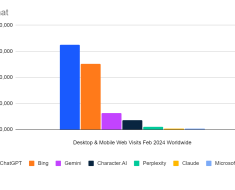As we navigate through the era of digital communication, AI chatter has become increasingly prevalent in our everyday interactions. This term refers to the sophisticated artificial intelligence systems capable of understanding and generating content across multiple media formats, including text, images, audio, and video. While these technologies offer incredible convenience and new avenues for interaction, they also come with their own set of risks and ethical dilemmas.
The Risks of Misinformation and Manipulation


One of the primary concerns surrounding AI chatter is the potential for spreading misinformation. Conversational AI chatbots, like ChatGPT, Siri, and Google Assistant, have the capacity to generate information rapidly in response to user queries. However, these AI systems can inadvertently produce or amplify false information if not properly supervised. For example, an AI chatbot might generate plausible but factually incorrect responses based on biased or incomplete data sets.
Moreover, there is a risk of manipulation. Malicious entities can exploit these AI systems to disseminate propaganda or misleading information tailored to influence public opinion or personal beliefs. This manipulation becomes particularly concerning when AI is used to mimic human-like interactions, making it harder for users to distinguish between genuine human conversation and AI-generated responses.
Privacy Concerns in AI Interactions
Another pressing issue is privacy. AI chatbots often require access to personal data to function effectively. This data might include conversation histories, personal preferences, or even location details, raising concerns about how this information is stored, used, and shared. Users might not always be aware of how much information they are divulging to these AI systems, or how it could be used beyond the scope of the initial interaction.
Ethical Implications of AI Dependence
Dependence on AI for communication also raises ethical questions. As we rely more on AI chatbots for various tasks and information, there is a risk of diminishing human interaction and the unique nuances that come with it. This shift could affect how we perceive empathy, understanding, and authenticity in our communications. It’s crucial to consider how this dependence might alter our social fabric and interpersonal relationships.
Safeguarding Against the Dark Side of AI Chatter


To mitigate these risks, several measures can be taken:
- Transparent AI Design: Developers should prioritize transparency in AI systems, making it clear when users are interacting with AI rather than a human. This clarity can help maintain trust and set realistic expectations for AI interactions.
- Robust Data Protection: Ensuring robust data protection measures are in place is critical. Users should have clear information about what data is collected and how it is used, with strict protocols to prevent unauthorized data access or breaches.
- Ethical AI Training: AI models should be trained on diverse and unbiased data sets to minimize the risk of spreading misinformation. Ongoing monitoring and updating of AI systems are necessary to address any emerging issues promptly.
- Educating Users: Increasing user awareness about the capabilities and limitations of AI chatter can empower individuals to use these technologies more responsibly and critically.
Looking Ahead
As conversational AI continues to evolve, it’s essential to stay vigilant about the potential downsides of this technology. By addressing the challenges head-on and fostering an environment of ethical AI use, we can enjoy the benefits of AI chatter while minimizing its risks. It’s a shared responsibility among developers, users, and regulators to ensure that AI serves as a tool for positive enhancement rather than a source of manipulation or misinformation.
In conclusion, while AI chatter offers exciting opportunities for innovation and interaction, it’s crucial to approach this technology with a careful, informed perspective. By understanding both the potential and the pitfalls, we can better navigate the complex landscape of digital communication in the AI era.
Please note, that the author may have used some AI technology to create the content on this website. But please remember, this is a general disclaimer: the author can’t take the blame for any mistakes or missing info. All the content is aimed to be helpful and informative, but it’s provided ‘as is’ with no promises of being complete, accurate, or current. For more details and the full scope of this disclaimer, check out the disclaimer page on the website.





